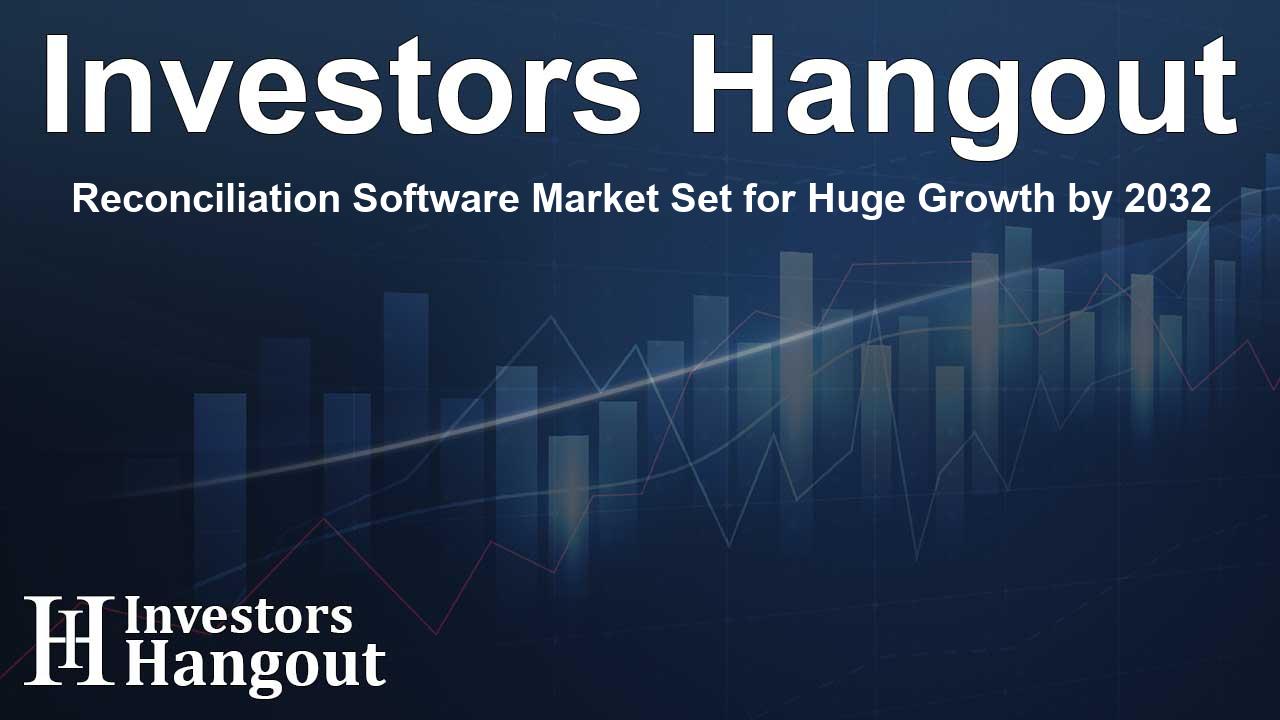Reconciliation Software Market Set for Huge Growth by 2032

Exploring the Reconciliation Software Market Surge
The reconciliation software market is evolving at an impressive pace, with projections indicating it will reach a substantial USD 6.49 billion by 2032. This growth reflects a remarkable 15.9% CAGR from 2024 to 2032. Rising demands from the banking, financial services, and insurance (BFSI) sector are key drivers of this growth as companies seek greater financial accuracy and automation in their processes.
Understanding Market Dynamics
The increasing need for financial process automation within strict regulatory frameworks is pushing businesses of all sizes, from large corporations to small and medium enterprises, to adopt reconciliation software. Approximately 60% of global financial institutions currently leverage these solutions, which enhance financial transparency and operational efficiency.
Impact of Automation on Investment Trends
Notably, around 70% of large enterprises are planning to integrate reconciliation software into their financial systems, aligning with the ongoing digital transformation trends. A recent survey found that nearly 45% of CFOs are increasing investment in automation technologies aimed at improving financial accuracy and streamlining operations. This trend is particularly visible in sectors like retail and e-commerce, where organizations handle vast transaction volumes and need efficient financial processing tools.
Major Players in the Market
Several established companies are currently leading the reconciliation software space, including:
- ReconArt Inc.
- Oracle Corporation
- BlackLine Inc.
- Broadridge Financial Solutions, Inc.
- SolveXia
- Tata Consultancy Services Limited
- Xero Limited
- SmartStream Technologies Ltd.
- Gresham Technologies plc
- DUCO
- StatementMatching.com Limited
- SAP SE
- Fiserv Inc.
Market Segmentation Insights
The reconciliation software market can be segmented by deployment methods, components, enterprise sizes, and end uses. The cloud-based reconciliation software segment leads the market, accounting for 55% of the total use due to its flexibility and scalability. While cloud solutions are on the rise, traditional on-premise systems still hold a significant share among larger firms with strict data security needs, indicating a solid 30% adoption rate. Companies are increasingly favoring hybrid solutions, balancing the benefits of cloud and on-premise deployments, which account for approximately 15%.
Regional Market Performance
North America dominates the reconciliation software market with a commanding 42% share, largely driven by the United States, which accounts for 65% of the adoption. This growth is further propelled by advancements in technology within the strong North American financial services sector and increasing compliance requirements. Canada has also seen a significant rise in reconciliation software installations, boasting a 20% year-over-year growth.
Competitive Landscape and Trends
The competitive landscape of the reconciliation software market is highlighted by collaboration between leading financial software vendors and fintech companies. These partnerships drive innovation and focus on delivering customer-centric solutions. Approximately 40% of these firms are joining forces to enhance reconciliation solutions for financial operations. Current developments also place significant emphasis on integrating AI and machine learning technologies, which aim to boost accuracy and automation in financial processes.
Future Prospects and Innovations
With over 50% of reconciliation solutions currently in use focusing on bank reconciliation, transaction matching, and general ledger functions, the market is positioned for continued expansion. Regulatory requirements for financial reporting are particularly favorable for growth in North America and Europe. Integrating AI and machine learning in reconciliation software is expected to raise financial accuracy significantly, indicating a future trend towards enhanced automation in financial processes.
Frequently Asked Questions
What is the expected growth rate of the reconciliation software market?
The reconciliation software market is projected to grow at a CAGR of 15.9% from 2024 to 2032.
Which sectors are driving the demand for reconciliation software?
The BFSI sector is a significant driver, alongside retail and e-commerce, due to their needs for financial automation and accuracy.
Who are the major players in the reconciliation software market?
Major players include ReconArt Inc., Oracle Corporation, BlackLine Inc., Broadridge Financial Solutions, and Tata Consultancy Services.
What trends are currently shaping the reconciliation software market?
Key trends include a shift towards cloud-based solutions, increased funding in automation technologies, and AI integration.
How does the North American market perform in terms of reconciliation software?
North America holds a 42% market share, driven largely by high adoption rates in the United States and increasing demand for compliance.
About Investors Hangout
Investors Hangout is a leading online stock forum for financial discussion and learning, offering a wide range of free tools and resources. It draws in traders of all levels, who exchange market knowledge, investigate trading tactics, and keep an eye on industry developments in real time. Featuring financial articles, stock message boards, quotes, charts, company profiles, and live news updates. Through cooperative learning and a wealth of informational resources, it helps users from novices creating their first portfolios to experts honing their techniques. Join Investors Hangout today: https://investorshangout.com/
Disclaimer: The content of this article is solely for general informational purposes only; it does not represent legal, financial, or investment advice. Investors Hangout does not offer financial advice; the author is not a licensed financial advisor. Consult a qualified advisor before making any financial or investment decisions based on this article. The author's interpretation of publicly available data shapes the opinions presented here; as a result, they should not be taken as advice to purchase, sell, or hold any securities mentioned or any other investments. The author does not guarantee the accuracy, completeness, or timeliness of any material, providing it "as is." Information and market conditions may change; past performance is not indicative of future outcomes. If any of the material offered here is inaccurate, please contact us for corrections.